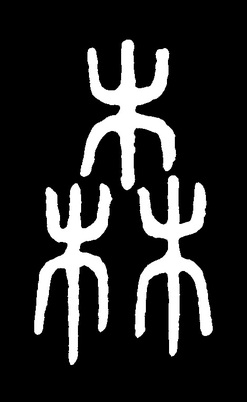 There is much confusion on the subject of how to classify Japanese kanji or, in other words, Characters of Han China (漢字). I often see websites, or even books, devoted to Japanese language and culture, where we read this and that about Japanese letters, or Chinese symbols, or anything equally intellectually challenged. To elaborate on the title of this article, we need to look at the definition of the word "letter" first. Letter is a stand alone linguistic unit of a written language representing one or more of the sounds used in speech. Letters form alphabets. Letters DO NOT bear any meaning. The Japanese word 文字 (moji) means "a character" or "characters". It is often shortened to 字. But the character 字 also means "letter", "symbol", "word", etc. It would seem that the phrase "Japanese letter", or "Japanese symbol" is yet another erroneous translation from Japanese to English, or from Chinese to English, as if we did not have enough of those laying about (see my article where I talk about the "grass script"). Chinese character (or Japanese kanji), unlike letters, may have multiple meanings, and they DO NOT form an alphabet, but a writing system based on logographic characters (or ideographic logograms). Chinese characters are also known as sinographs. There are six major groups into which one can divide Japanese kanji. I will discuss this in separate articles. Last but not least, only because you see an ancient Chinese character, such as the one you see in the picture above, it does not necessarily mean it has to be a pictograph. This particular kanji is 森 (Japanese: mori, i.e. woods), and although it is composed of three pictographs of a tree (木, Japanese: ki), it belongs to a group of characters that are a combination of two or more pictographs, or characters whose meaning is based on an abstract concept. This group is known in Japanese as 会意文字 (kai-i moji). Characters of pictographic origin form one of the six groups of Chinese characters. In other words, some of the Chinese characters are pictographs, but this group of characters is not that large at all. There are over 90,000 (yes, you read correctly, it is ninety thousand) Chinese characters out there. 85% - 90% of them belong to a group known as the samasio-phonetic compound characters (形声文字, Japanese: keisei moji). Such characters, as the name suggests, are composed of semantic and phonetic radicals. Summarizing, do not trust blindly "serious" literature on the subject of Chinese or Japanese linguistics. For example, I can tell you now, that ALL books that I saw on the etymology of Chinese characters are either entirely incorrect, or incorrect in a large part. Those are either based on no research at all, or a research done so poorly, that the authors should pay damages to whoever buys their books. Often times authors base whatever they write on other English authors, who are also wrong, or on outdated research preceding the discovery and analysis of the oracle bone script (甲骨文). I am currently working hard on changing this unacceptable status quo, on which subject I will be able to update you in next month or two. |
Categories
All
AuthorPonte Ryuurui (品天龍涙) Archives
August 2020
|

 RSS Feed
RSS Feed
